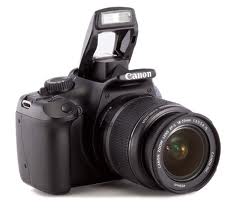 What is DSLR? What is DSLR?
DSLR stands for Digital Single Lens Reflex. This type of digital camera has removable lenses, and a reflex mirror which allows live optical viewing through the lens taking the image. DSLR cameras use a mirror that allows you to see the image you are about to shoot through the view finder. When you take the shot, the mirror flips up allowing the image sensor to capture the image.*
Digital Camera Modes:
Automatic Mode:
The following DSLR settings are found on most camera models. However, depending on your camera brand, some may not be available.
 Portrait - DSLR camera settings for portraits. Set your digital camera to portrait mode when you’re taking photographs of people. Portrait mode will set the image color for skin tone perfectly. Portrait - DSLR camera settings for portraits. Set your digital camera to portrait mode when you’re taking photographs of people. Portrait mode will set the image color for skin tone perfectly.  Landscape - Use this SLR camera setting when your taking photos of landscapes. For example if your photographing beach or mountain sceneries. Landscape - Use this SLR camera setting when your taking photos of landscapes. For example if your photographing beach or mountain sceneries.  Close Up - Close up mode speaks for itself. For example, when you want to photograph small objects so they fill the whole frame as if to appear larger. Close Up - Close up mode speaks for itself. For example, when you want to photograph small objects so they fill the whole frame as if to appear larger.  Sports - Sports mode should be used when you want to photograph a moving object such as a child or dog running. Sports - Sports mode should be used when you want to photograph a moving object such as a child or dog running.  Night Portrait - Choose night portrait automatic mode when you want to shoot a person in low light such as night time. Night Portrait - Choose night portrait automatic mode when you want to shoot a person in low light such as night time.  Flash Off - This mode is useful for times when your not allowed to use a flash. For example, in an art gallery. Flash Off - This mode is useful for times when your not allowed to use a flash. For example, in an art gallery.
Semi-Automatic Modes:
Aperture Priority Mode (A or AV): Aperture priority mode will let you select the aperture and the camera will choose other appropriate settings such as shutter speed, white balance, ISO etc. Use this mode when you need to control the depth of field. If you choose large f-number(smaller aperture), more of the scene will be in focus and your camera will choose smaller shutter speed. If you choose small f-number(larger aperture), less of the scene will be in focus and your camera will choose larger shutter speed.
Shutter Priority Mode (S or TV): Shutterr priority mode will let you select the shutter speed and the camera will choose all other settings. Use shutter priority mode when you want to have control over the shutter speed. This mode is best for photographing moving objects. By using fast shutter speed, you can freeze the motion; and using slow shutter speed, you can make your subject blurry.
Program Mode (P): Program mode is almost similar to auto mode. In this mode, the camera will choose appropriate aperture and shutter speed; and you can control everything else. By everything, I mean ISO, Brightness, White Balance, Flash etc.
Manual Mode (M):
You will have full control over your camera in manual mode. That means you have to think about all the settings such as aperture, shutter speed, ISO, ehite balance, flash etc. It is not recomended to use manual mode unless you have a clear idea of what you going to do.
|


